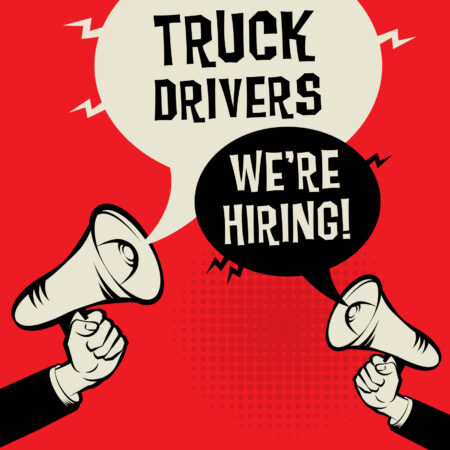Measuring the true cost of recruitment
Let’s take a close look at all the costs associated with bringing on a new driver and attempt to estimate the total price every time we do this.
Efficient cost management means not spending money that does not need to be spent. In hiring drivers, it is necessary to spend money to place ads, hire recruitment services, screen candidates, and then train and orient the new drivers.
But if the drivers do not stay long once hired, this money must all be spent again to find a replacement. An efficient approach would reduce the spend on recruitment, hiring, and orientation.
Spending that money over and over again through a year for each driver is not an efficient use of limited funds. An efficient approach to managing these expenditures would focus on building an effective, responsive infrastructure to ensure that drivers, once hired, choose to stay longer. Efficient cost management means reducing driver turnover.
Let’s consider some of the basic figures. Depending on the marketplace, the cost of recruiting a driver and helping them to become productive can range from $6,000 to $12,000. For some markets, it could be a lot more.
For the sake of this discussion, let’s be conservative and say that it costs $9,000 to land and orient the driver. You can see where this is heading. If we have 100 drivers and an 80% driver turnover rate, we are hiring 80 new drivers each year. With this rate and these costs, we will be spending $720,000 per year to hire drivers – every year.

If our company has an operating ratio of 95 (gross profit margin of 5%), we would need to generate $14.4 million dollars per year to service that annual expense of $720,000. And remember, a high turnover company can never be operating efficiently; therefore, it is much harder to get and keep clients to achieve that revenue. It’s a vicious circle.
If we could reduce our turnover in half each year, we would reduce our onboarding cost by $360,000 per year. This would reduce the revenue needed to support this expense to $7.2 million. Keeping in mind the company’s improved efficiency with a lower driver turnover rate, we might even operate at improved margins.
It just keeps getting better.
But be sure to keep the focus on recruiting and hiring quality drivers. The objective is not to reduce the cost of hiring an individual driver. The aim is to minimize the overall cost of hiring all your drivers. It is acceptable to spend more per hire if the selection and retention is improved.
With these kinds of numbers, it is obvious that reducing driver turnover has the potential for substantial cost savings and improved profits. In our example, going from an 80% turnover to 40% saves $360,000 per year. These cost reductions drop straight to the bottom line as increased profits.
All of a sudden reducing driver turnover should become an obvious business objective.
We have assumed an average cost of $9,000 to find and bring a new driver up to speed. Your cost will be different, and you need to estimate them. Start by making a list of the costs that apply to your situation.
Here are some of the typical cost elements for you to consider when estimating your own cost of hiring: Advertising; cost of dedicated recruitment phone lines; websites; automated application systems; recruiter salaries or agency fees; referral fees; sign-on bonuses; background checks; road tests; staffing training and orientation meetings; orientation materials; acclimation period before the driver becomes productive; mentorship.
That’s just a sample to help get you started. You may have other costs that apply to your recruitment processes. For instance, your industry or region might require some very specific skills that go well above the typical driver training and orientation sessions needed to onboard an experienced driver.
We also know that lower turnover usually means a safer carrier. Which in turn means lower insurance expenses, fewer accident claims, less wear and tear on equipment resulting in a higher residual value of rolling assets. Lower turnover means better turnaround of receivables through a better understanding of paperwork flow with seasoned drivers. Fewer service failures with less turnover means a stronger relationship with customers.
Companies with lower turnover are more profitable companies.
Have your say
This is a moderated forum. Comments will no longer be published unless they are accompanied by a first and last name and a verifiable email address. (Today's Trucking will not publish or share the email address.) Profane language and content deemed to be libelous, racist, or threatening in nature will not be published under any circumstances.
As Chair of CTHRC we pegged the cost of replacing a Professional Driver at $8000 to $12000 several years ago.
These figures are not out of line .